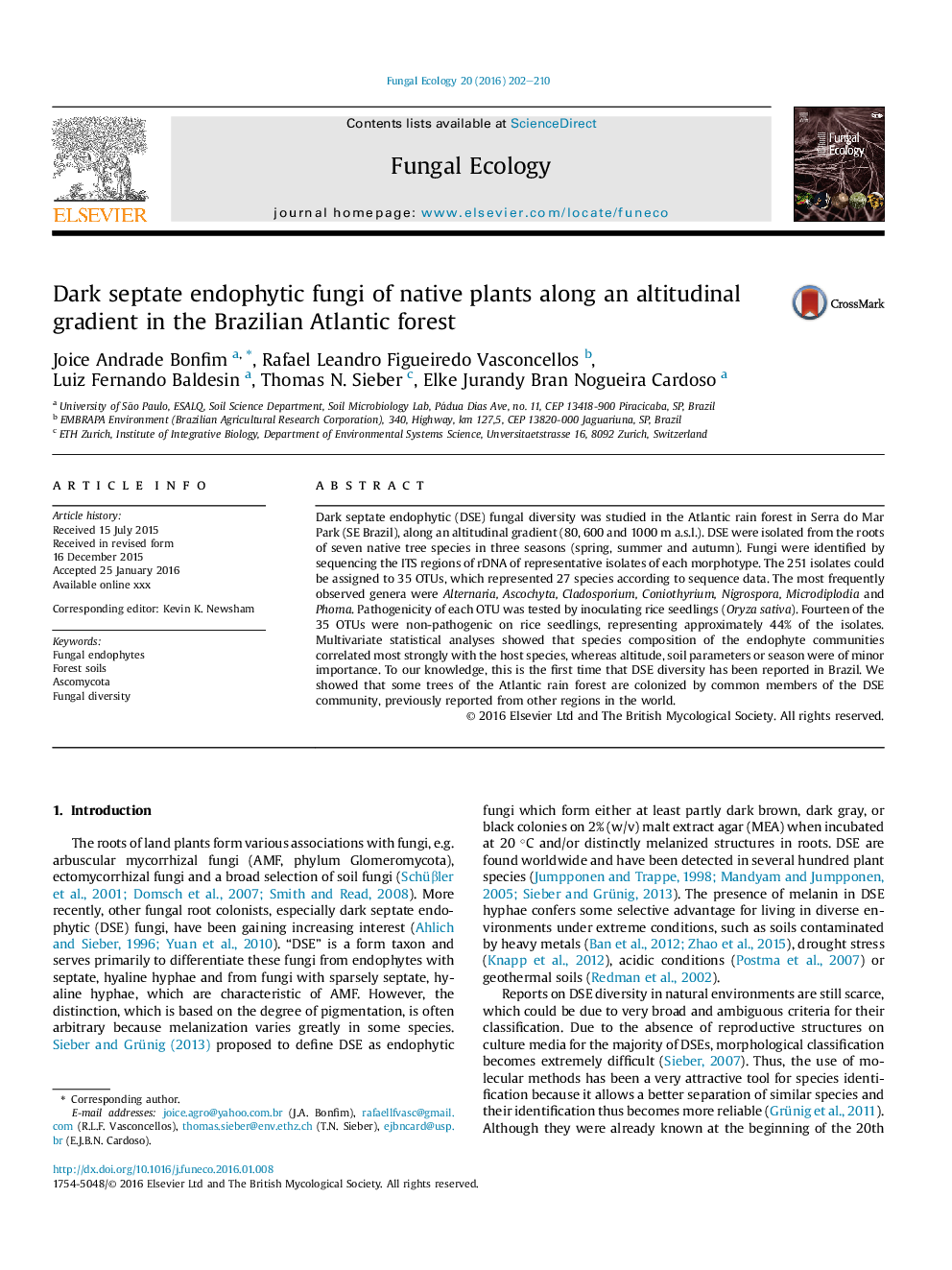| Article ID | Journal | Published Year | Pages | File Type |
|---|---|---|---|---|
| 8384501 | Fungal Ecology | 2016 | 9 Pages |
Abstract
Dark septate endophytic (DSE) fungal diversity was studied in the Atlantic rain forest in Serra do Mar Park (SE Brazil), along an altitudinal gradient (80, 600 and 1000Â m a.s.l.). DSE were isolated from the roots of seven native tree species in three seasons (spring, summer and autumn). Fungi were identified by sequencing the ITS regions of rDNA of representative isolates of each morphotype. The 251 isolates could be assigned to 35 OTUs, which represented 27 species according to sequence data. The most frequently observed genera were Alternaria, Ascochyta, Cladosporium, Coniothyrium, Nigrospora, Microdiplodia and Phoma. Pathogenicity of each OTU was tested by inoculating rice seedlings (Oryza sativa). Fourteen of the 35 OTUs were non-pathogenic on rice seedlings, representing approximately 44% of the isolates. Multivariate statistical analyses showed that species composition of the endophyte communities correlated most strongly with the host species, whereas altitude, soil parameters or season were of minor importance. To our knowledge, this is the first time that DSE diversity has been reported in Brazil. We showed that some trees of the Atlantic rain forest are colonized by common members of the DSE community, previously reported from other regions in the world.
Related Topics
Life Sciences
Agricultural and Biological Sciences
Ecology, Evolution, Behavior and Systematics
Authors
Joice Andrade Bonfim, Rafael Leandro Figueiredo Vasconcellos, Luiz Fernando Baldesin, Thomas N. Sieber, Elke Jurandy Bran Nogueira Cardoso,
